Tips to Prepare for Flooding
Flooding occurs from heavy rains, stormwater, rivers and streams overflowing their banks, high tides, and storm surge. Floodwaters and sewer backups can cause sizable property damage. Just a few inches of water can ruin carpet, drywall, furniture, and electronics. Understanding your risk can help you make choices about the best way to protect your property.
The information below provides tips to help you adapt and prepare your home for flooding. This information comes from Troy and Cooper (2021a and b).
Step 1: Understanding your flood risk
Are you located in a floodplain? Even homes located outside of high-risk zones may flood during strong storms. Furthermore, extreme weather events that lead to flooding are projected increase in frequency and intensity. To find out your household flood risk:
- Use more than one flood risk assessment tool to better understand your risk.
- When purchasing a home, research whether the property has a history of flooding. Some states require sellers to disclose flood history, while others do not.
- Get a home inspection to see which parts of your home are most at risk.
Flood Risk Assessment Tools
Two tools are widely available to the public for assessing household flood risk: (1) the Federal Emergency Management Agency’s (FEMA) floodplain maps and (2) Flood Factor, created by the nonprofit First Street Foundation.
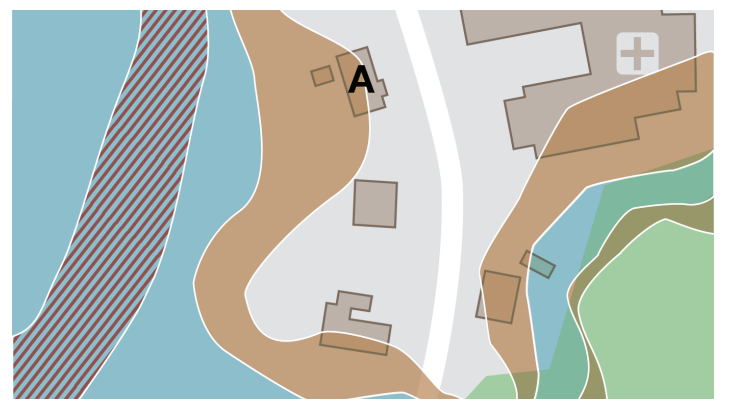 FEMA’s Floodplain Maps: These display the floodway (striped), the 100 year floodplain (blue), and the 500 year floodplain (red).
FEMA’s Floodplain Maps: These display the floodway (striped), the 100 year floodplain (blue), and the 500 year floodplain (red).
Pros:
- Used to determine insurance requirements, inform building codes, and help communities develop strategies for reducing their risk
Cons:
- Property-level details are not available for all locations
- Does not account for climate change
- Only considers flooding caused by rivers
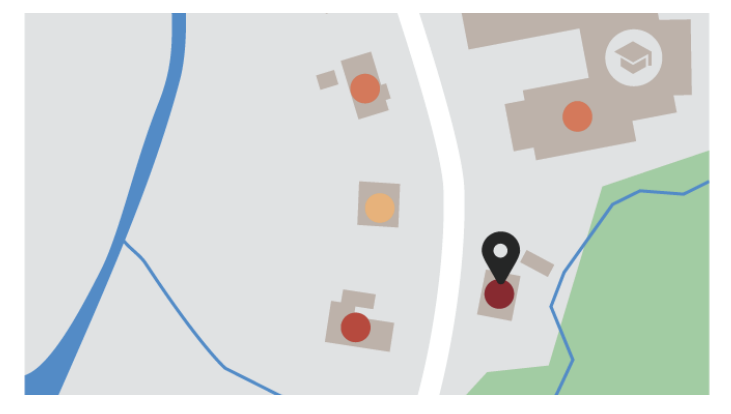 Flood Factor: This tool shows a dot representing flood risk for each property ranging from minimal (green) to extreme (dark red).
Flood Factor: This tool shows a dot representing flood risk for each property ranging from minimal (green) to extreme (dark red).
Pros:
- Shows property-level flood risk for more locations
- Covers the continental US
- Integrates climate change into flood risk estimates
- Includes properties at risk from heavy rainfall
Cons:
- Cannot be used to determine insurance rates, building codes, or community flood mitigation plans
- Risk estimates produced by computer models, not verified by local studies
Neither tool considers how future landscape changes could affect flooding or how impacts such as road flooding might affect flood response. However, both are free to access and provide important information and can help you make informed decisions about purchasing a home, acquiring flood insurance, and protecting your property. You can use both tools when assessing your risk.
Step 2: Determining risk-reduction options
If your household is at risk, talk to your insurance agent or local floodplain manager to discuss flood insurance and home protection options available to you. Ask agents and yourself questions such as:
- Can FEMA or local grants help pay for risk-reduction strategies?
- Will your flood insurance costs go down if you choose any flood protection measures?
- How long do you plan to be in your home and how does this affect the flood protections you might choose or selling the home?
- What are the costs of inaction? How costly would it be if your home flooded? Which items would you need to replace? Where would you live during repairs? How long would you be out of your home?
Step 3: Protecting your home
There is no one-size-fits all solution to protect your home. Below are some methods that involve different costs and can change your flood insurance rate. The options you choose depend on your budget and how much risk you are willing to accept.
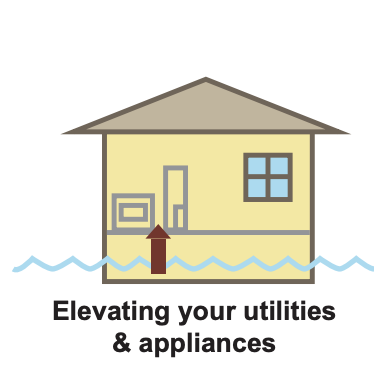
Pros
- Protects important parts of home from flooding and reduces repair costs
Cons
- Ground floor remains at risk to more extreme floods
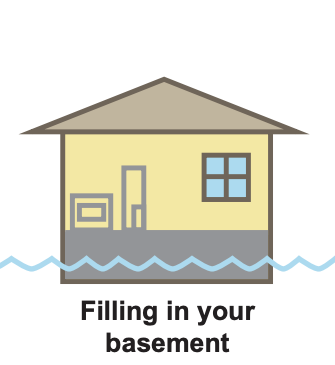
Pros
- Less expensive than elevation
- No change to external appearance
Cons
- Lose basement access
- Ground floor remains at risk to more extreme floods
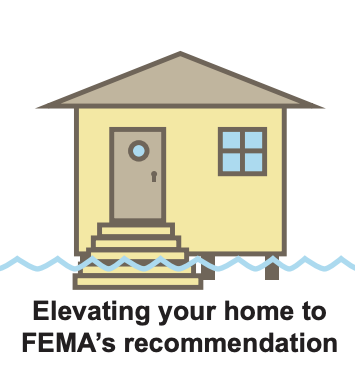
Pros
- Better protection than other methods
- Eligibility for grant money
Cons
- This is a minimum standard and does not consider future changes in risk
- More expensive
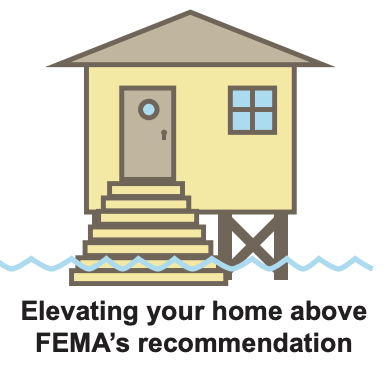
Pros
- Most protection from extreme floods
- Lower cost per extra foot once elevated
Cons
- Most expensive strategy in the short-term
- The ideal height is unclear
Infographic Handouts
For printable infographics about flood risk and how to adapt, check out the 1-page handouts created by the Penn State Initiative for Resilient Communities:
References
C. Troy and C. Cooper (2021a). Assessing Your Flood Risk. Retrieved from https://www.psirc.psu.edu/assets/PSIRC_flood_risk_review_one-pager.2021-08-10.pdf
C. Troy and C. Cooper (2021b). Inland Flood Risk & Your Home. Retrieved from https://www.psirc.psu.edu/assets/PSIRC_home_elevation_one-pager.2021-08-10.pdf